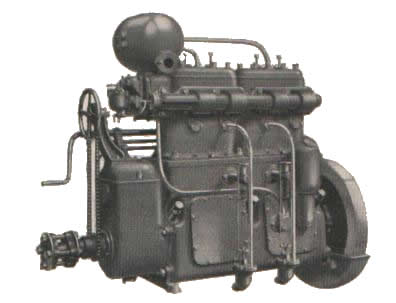As the name implies, the Kelvin Sleeve engine has as its distinguishing feature a sleeve valve which consists of a thin cast-iron liner encircling the piston and working between it and the cylinder wall. Mechanism of simple design gives a combination of vertical and turning motion to this sleeve valve, causing its ports to register with corresponding ports in the cylinder wall. A single sleeve valve per cylinder takes the place of the usual two poppet valves with their springs, plungers, etc. In the Kelvin Sleeve engine the combustion chamber is machined smooth throughout, while being symmetrical, consequently there are no heated projections to cause pre-ignition. The result is that a much higher compression can be employed than in poppet-valve engines, with correspondingly increased power. The makers claim that the Kelvin Sleeve engines give at least 25 per pent. more power than the poppet-valve type with the same cylinder capacity and revolution speed, while having the advantage of 15 to 20 per cent. greater economy in fuel consumption. In this connection, the biggest sleeve-valve engine, which has four cylinders, consumes .58 pints of paraffin per shaft h.p. hour. An impulse starter is fitted to the magneto, which has a spring and trigger device that gives a movement of the armature at. starting, equivalent in speed to that when the engine is running. But this feature alone is not enough to give the best results. Many users will know that a magneto will only give a good spark at two positions in each revolution, these positions extending over only a few degrees in each case. This problem is solved in the Kelvin Sleeve engine by rocking the complete magneto, instead of merely the contact breaker.
The difficulty of making an engine run slowly on paraffin is overcome in the Kelvin Sleeve engine by providing a separate set of inlet ports fed by a vaporizing tube in the exhaust manifold which allows of running dead slow for hours at a time.
The flywheel is not enclosed. It has a fairly large diameter and is fitted at the forward end of the engine. In order to avoid the possibility of any accumulation of bilge water being thrown up by the flywheel, a detachable oil-tight tray is suitably arranged.
